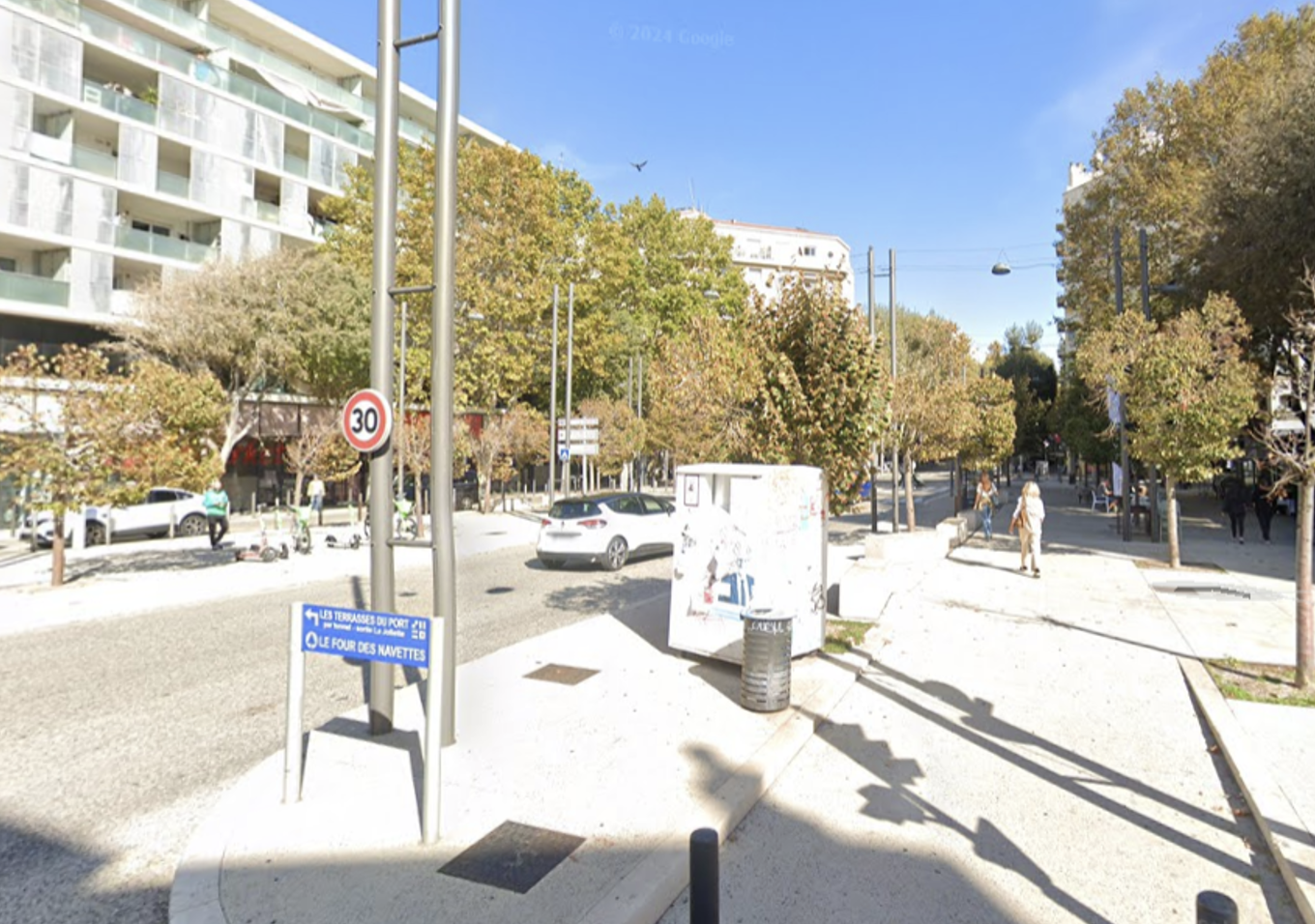
MARSEILLE
Sights set on a greener future
Marseille is the metropolis of southeastern France and the second largest city by population in France. Founded around 600 B.C. by Greek sailors from Phocaea in Asia Minor, it is still known today as the “Phocaean City”.
The ambition of the governance of the City of Marseille is to work towards the development of a “fairer and greener” city. This ambition is reflected in the city’s proactive commitment to the fight against social, territorial, and environmental inequalities, and to an ecological transition that can involve all residents.
With its sights set firmly on the future, Marseille’s future is now rooted in sustainable development, as demonstrated by the “Marseille 2030 Climate Objective” initiative, which is now the cornerstone of all the city’s public policies. In this respect, the new tourism strategy “Marseille, a sustainable and attractive destination: 2024-2030 strategy for the responsible development of tourism and leisure” provides the framework for renewed action by the city.
The Cool Noons Paths initiative in Marseille was developed in collaboration with the Marseille Tourist Office, particularly in preparation for the Olympic Games set to take place in the summer of 2024. The Tourist Office identified the touristic points of interest (POI), and the City of Marseille adapted the paths between each POI to ensure they are as cool and pleasant as possible, while balancing factors like car traffic and the charm of the streets.
In total, five paths were preselected by elected officials of the City of Marseille to be tested throughout the project. Two out of these five paths were finalized for testing during the summer of 2024:
Path 1 – from Mucem to Palais Longchamp Touristic;
Path 2 – from Old Port to the Olympic Marina.
Path 1
“Historical city center path” : from the MUCEM to the Longchamp Palace
This path is entirely located in the “Resilient city centre” study conducted by Inddigo that analysed which streets are sunny or shaded and what are the wind corridors and the canyon streets.
Regarding the summer comfort, shaded street without canyon effect [1] were preferred. The worst case is a street highly exposed to sunlight with a canyon effect. Sunny streets that are shallow with high buildings are in general more shaded and fresher than sunny streets with moderated mask effect if there is no canyon effect.
[1] A street canyon is a restricted space in an urban area formed by surrounding buildings on both sides of a street. It limits natural air ventilation, and then affects the air quality and the surrounding temperature.

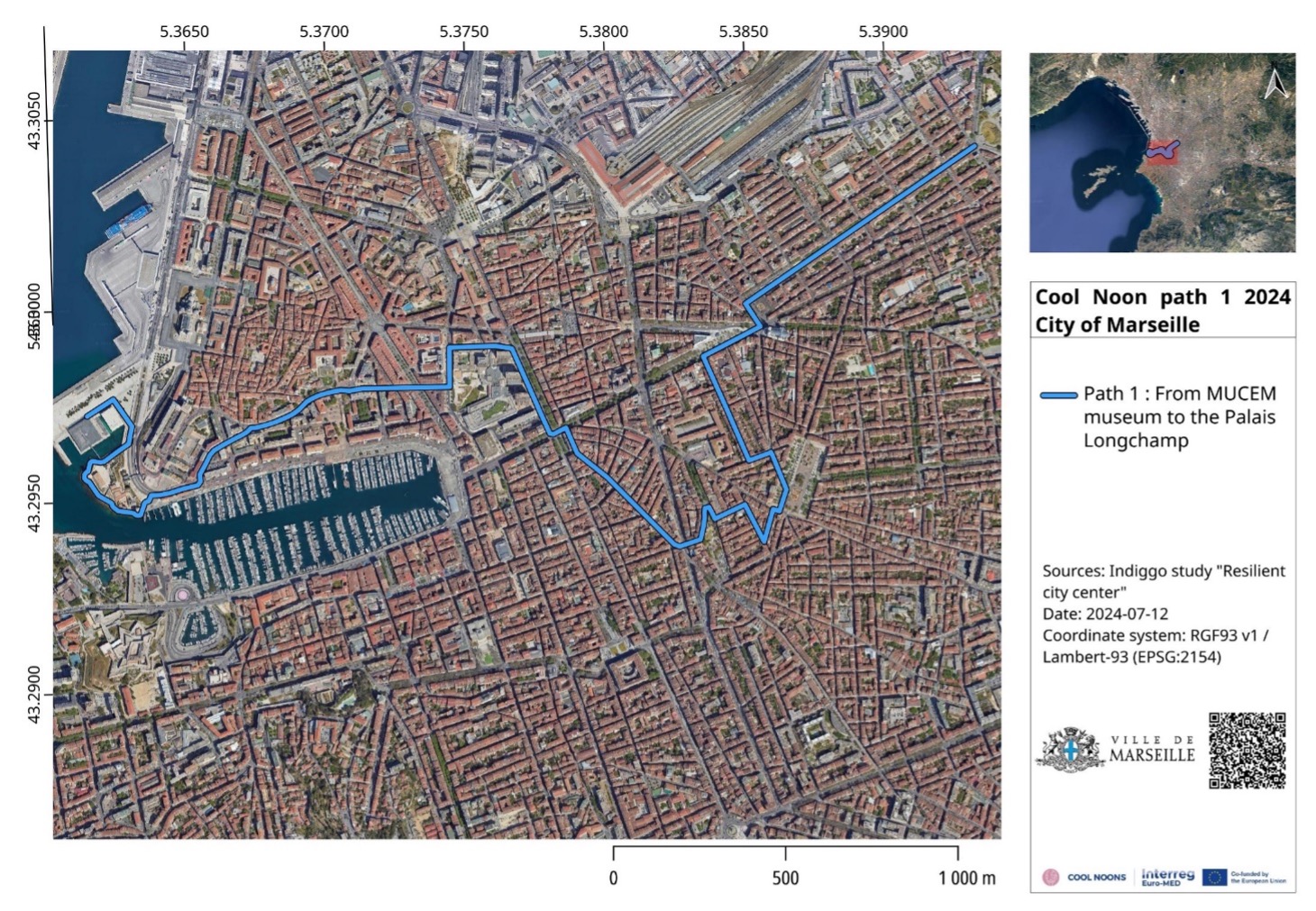
The points of interest in this path are:
1. MUCEM museum
2. City Hall (place Bargemon)
3. Centre Bourse
4. Cours Belsunce
5. Cours Julien and its stairs
6. Place Jean-Jaurès
7. Église des Réformés
8. Palais Longchamp
Starting from the MUCEM, an air-conditioned museum, the path extends to the beginning of Saint-Jean Avenue. Although this segment is sunny, it benefits from the sea breeze due to its proximity to the sea border, providing a refreshing effect. The section from Saint-Jean Avenue, continuing through Caisserie Street to the Republique Street crossing, is primarily sunny with a moderate masking effect. This route was chosen over the nearby Panier area because it is a more peaceful area for consultation with neighbourhood associations and street improvements proposed by project focus groups will be better accepted.
Then the streets are shaded with numerous big trees, for example Henri Barbusse Street and Cours Belsunce, until the Canebière crossing. The Centre Bourse mall is air-conditioned.
The Aubagne street is relatively fresh because it is shallow and with high buildings. This street is emblematic of the Noailles area, with a multicultural neighbourhood and shops. Then, the Cours Julien is very fresh, with a lot of shady places, trees, and fountains. Between the Cours Julien and the Jean-Jaurès Place, there are only sunny streets with moderate masking effect. The ones without canyon effect were selected (rue Crudère, rue des Trois Rois).
The Place Jean-Jaurès is shaded on its edges. Between the Place Jean Jaurès and the top of the Canebière, it was chosen to go through the Rue Senac de Meilhan (more agreable than the parallel Curiol street) with little car trafic and that is planted by residents.
The end of the path from the Stalingrad Square (Réformés Church, a fresh cult place) to the Palais Longchamp is shaded and uses soft mobility only (pedestrian, bicycle, and tramway). The end of the path is a shady park with trees (Longchamp Park). By taking the subway (line 1 station Cinq Avenues Longchamp) or the tramway (line 2), it is possible to go back to the Old Port area, not far from the City Hall and the Centre Bourse mall.

Resilient city centre study. legend of the map: shaded street (blue line); sunny street that is shallow with high buildings (yellow line), sunny street with moderated mask effect (red line) ; street highly exposed to sunlight (purple line); canyon effect (black hatch).
Path 2
“Escapade in Endoume”: a loop from the Catalans Beach to the Valmer Park
GPX : https://www.visugpx.com/TYzH59m73h
This urban walk starts at Plage des Catalans. It is divided into two distinct sections. The first is an easy seaside section along the Corniche Kennedy, taking in the Malmousque peninsula before reaching the Villa Valmer park. Then there’s a second, more challenging section that explores the heights of the Endoume district.
Both can be done as a loop or separately, depending on your mood, your walking ability and the weather. The Corniche Kennedy is well served by the RTM 83 bus service, whose air-conditioned vehicles make it easy to get to either the Old Port or the Rond-Point du Prado on a hot day.

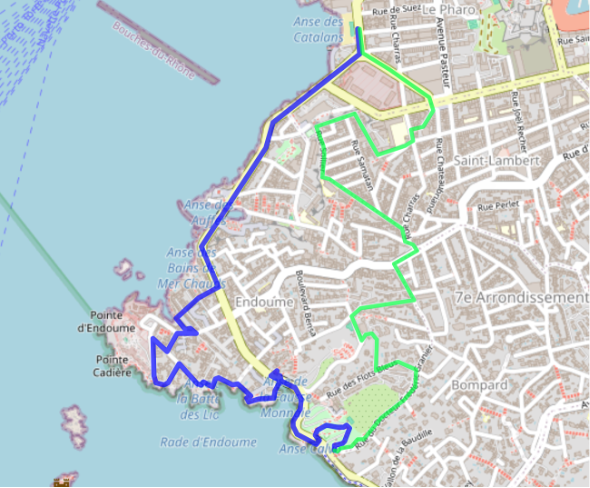
The points of interest in this path are:
- Plage des Catalans
- Monument aux morts de l’Armée d’Orient
- Vallon des Auffes
- Anse de Malmousque
- Plateau de Malmousque
- Anse de Maldormé
- Port de la Fausse Monnaie
- Parc Valmer
- Village d’Endoume (Place Saint Eugène)
- Place du 4 Septembre
- The starting point is the Plage des Catalans, dominated by the Lazaret tower.
This beach is ideal for a refreshing swim. Its waters are also home to Marseille’s underwater museum, which can be explored with a few swims and a simple mask and snorkel.
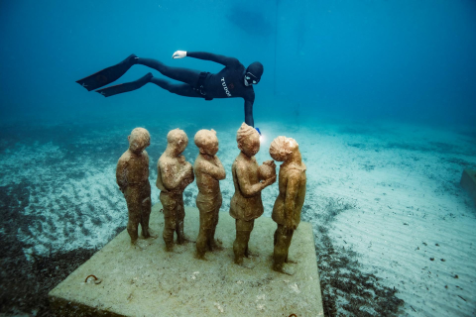
- The route follows the Corniche John Fitzgerald Kennedy to reach the Malmousque district. After 700 metres, you’ll reach the square du lieutenant Danjaume, which houses the monument to the dead of the Armée d’Orient and the distant lands. A bridge will take you over the small port of the Vallon des Auffes.
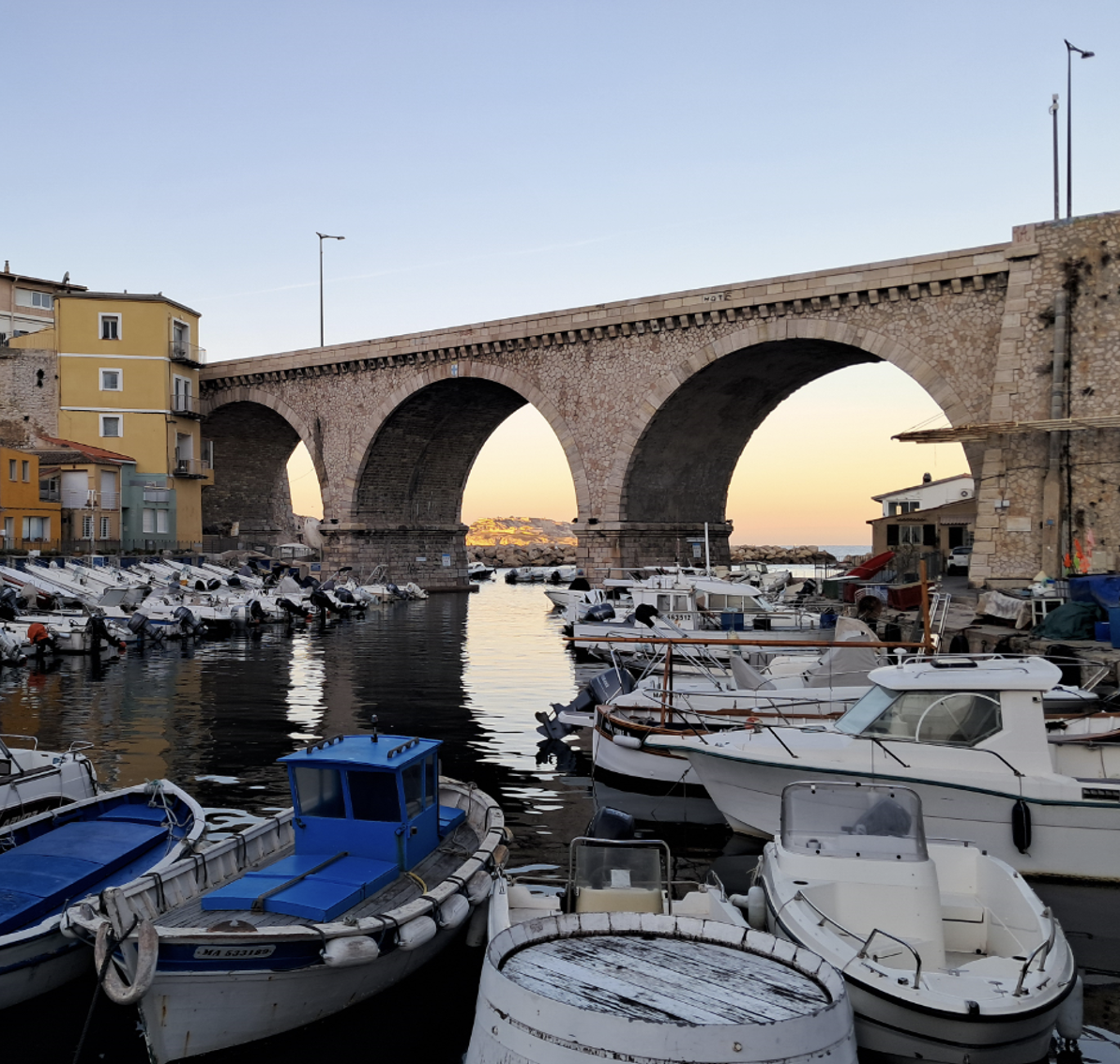
- Continue on to Place Paul Ricard, which pays tribute to the entrepreneur and father of the famous aniseed-flavoured drink (always drink in moderation). Here you will also find a wall made famous at one time by the portrait of footballer Zinédine Zidane. Today, you can admire a fresco by street artist Mahn Moix dedicated to the SOS Méditerranée charity. It depicts a lifeguard scanning the sea with a pair of binoculars.
At 108 de la Corniche Kennedy, turn right and take the stairs down to rue Malmousque. Continue straight ahead until you reach the small port of Malmousque.
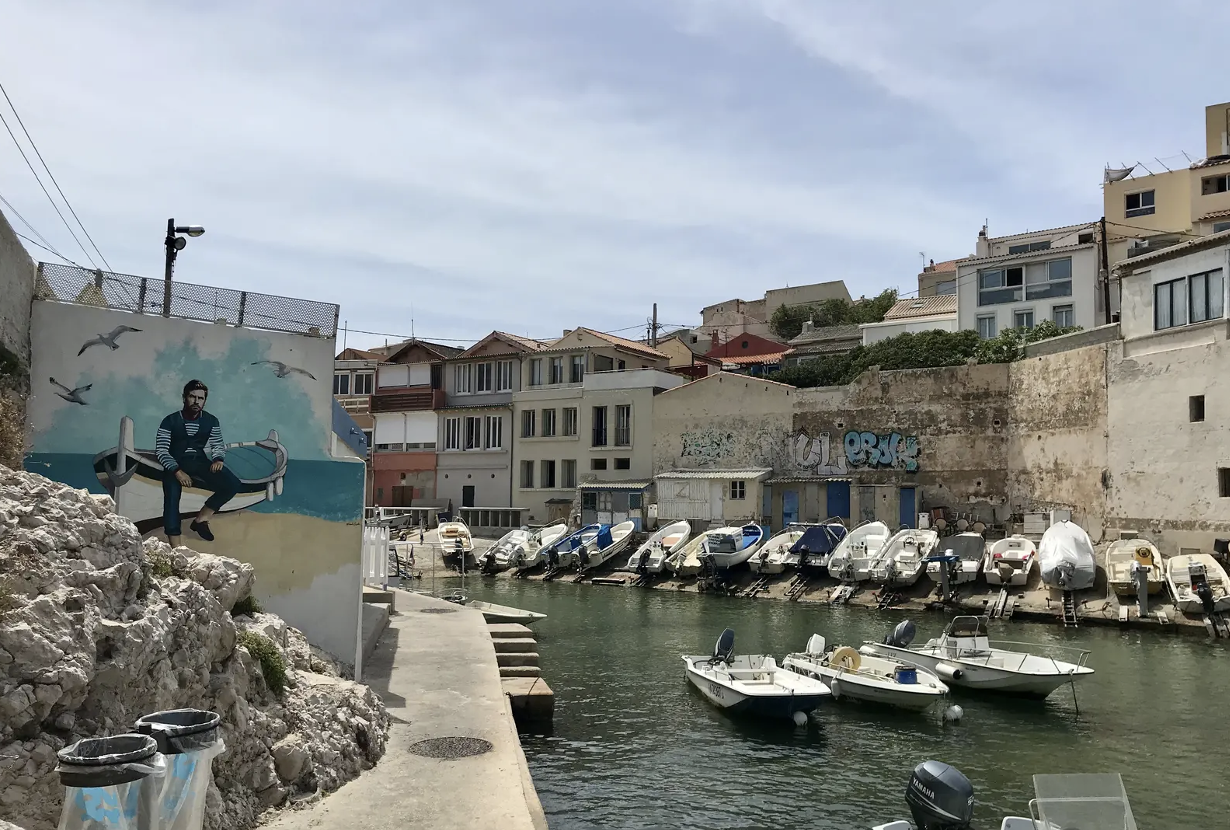
- Turn left onto rue Va à la Calanque and continue left along the Montplaisir crossroads, which leads to rue Boudouresque and a vintage façade protected by an awning. At the next crossroads, turn left to stay on rue Boudouresque and join rue de la Douane. Turn right, then left at the next junction. You will reach the Malmousque plateau.
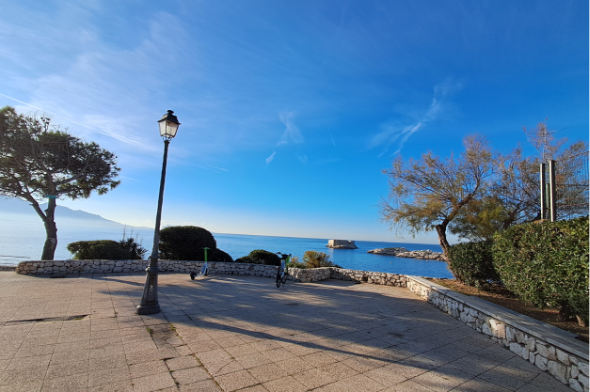
- In the distance, you can see the islands of Marseille. Turn right along a military field. This is the Foreign Legion convalescent and leave centre. You will come to a landscaped promontory bordered by tamarisk and a pine tree. Take advantage of the low wall to sit for a moment in the shade and admire the view of the sea, the islet of Gaby, the Château d’If and the Frioul archipelago. And in the distance, straight ahead of you, the Marseilleveyre massif, Maïre Island and Tiboulen de Maïre.
- To the left of the candelabra, take the small staircase down to a small section of the customs path. Go up rue Notre-Dame des Grâces and turn right into rue de la Douane. You will pass the Endoume marine station and its oceanology centre. A new staircase takes you to the cove of the batterie des Lions. On a peninsula overlooking the sea, admire the Petite Ourse villa.
- Continue along the seafront path to reach Anse de Maldormé
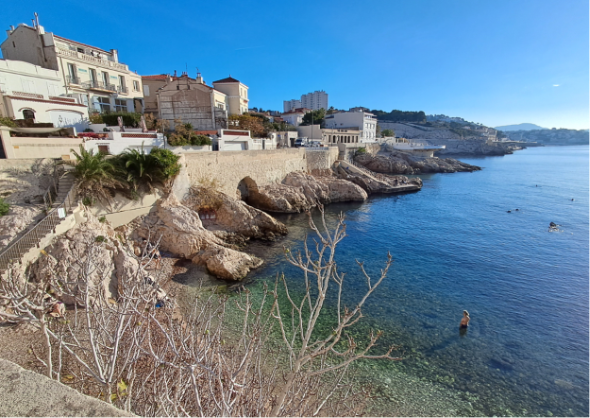
- You will pass a number of beautiful Marseille-style residences. Continue until you reach the entrance to the Petit Nice car park, a five-star restaurant run by 3-star Michelin chef Gérald Passédat. On the right, a staircase will take you back to the seafront, bypassing the luxury establishment.
- The large, flat rocks are popular with bathers, especially on mistral-force days. Pass under the Fausse Monnaie bridge and discover the port of the same name. Follow the steps on your left, which will take you up to the Corniche Kennedy.
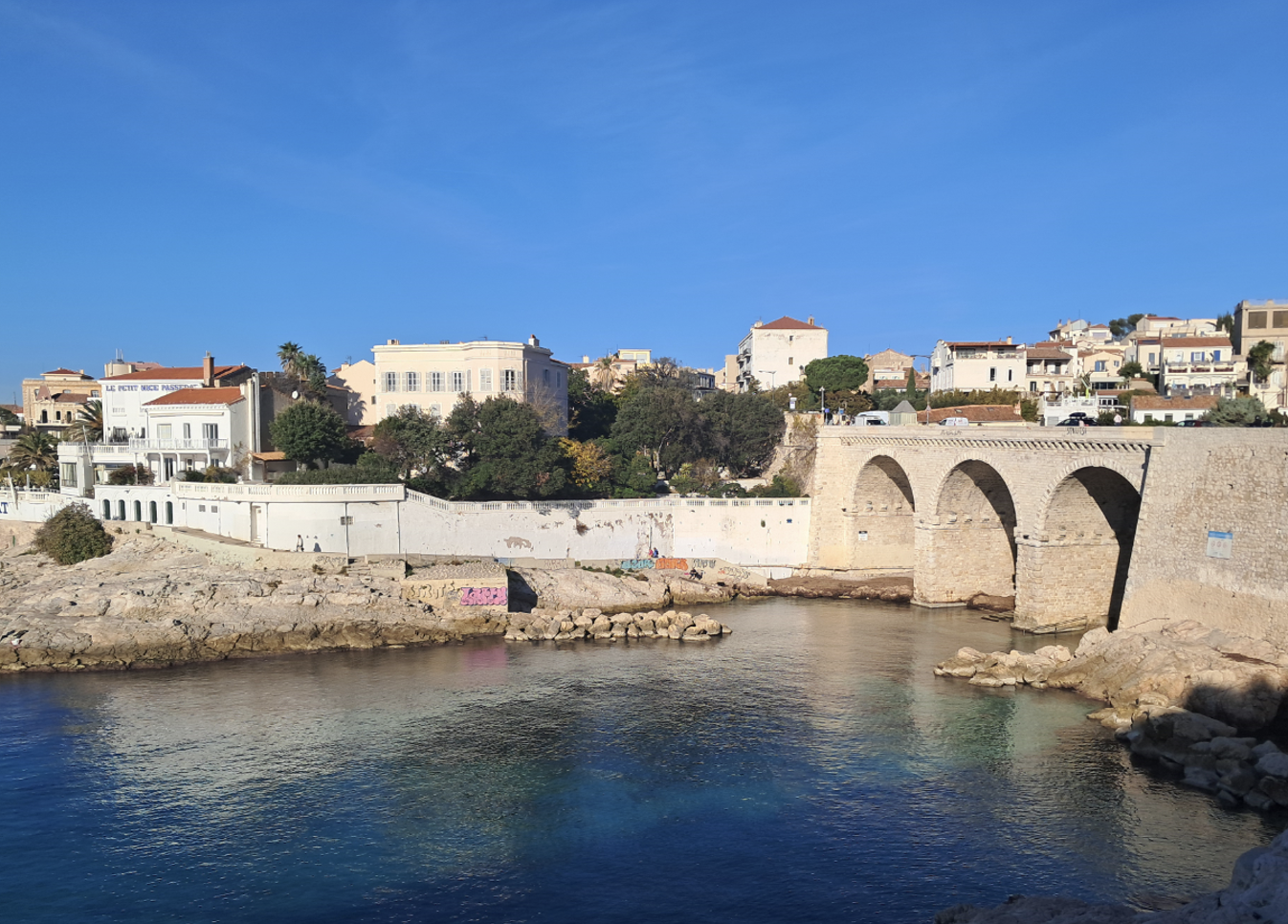
- Continue along the Corniche. You will pass the famous tide gauge. Shortly afterwards, a pedestrian crossing allows you to cross the road before reaching the entrance to the Villa Valmer park. This is the end of the first section of this discovery tour of the Endoume and Malmousque coastal districts.
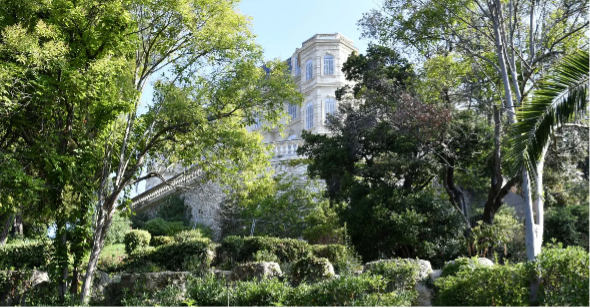
- Go up the central alley and fork right. Walk between the pines and holm oaks to reach the exit onto rue du Docteur Frédéric Granier. Keep going until you reach the impasse Arnaud Bompard on your right.
- Walk a few metres further and you’ll see a commemorative plaque dedicated to ‘radio’ resistance fighters. Retrace your steps to continue around the grounds of the large Montvert residence. At the end, turn left and walk along Rue des Flots Bleus.Despite the high fences, you can still see the sea in the distance. Turn right onto chemin du pont, which refers to the Fausse Monnaie bridge on the Corniche. At the next junction, do the same and branch off into the Targuist crossing.
- You can see the Pont de la Fausse Monnaie and the steps. This is a beautiful green space, the Théâtre Silvain. In fine weather, this municipal facility offers a varied and popular programme of shows. Walk past the Targuist boulodrome, which is once again an open space for pétanque players. Shortly afterwards, turn right into rue Papon, which becomes impasse Fouque. The cypress avenue will be your ally.
- As you walk up the lane, admire the view of the Notre-Dame de la Garde basilica, which can be seen in the distance between the houses.
The houses often look alike and are characteristic of the ‘3-window Marseille’ style. This style is typical of the city centre, and was particularly common from the 17th century until the early 20th century. The walk-through flats, spread over several floors, have three windows looking out onto both the street and the courtyard, and floors supported by wooden beams fixed into the party walls perpendicular to the street, as the façades are not load-bearing. Take rue du Docteur Granier to reach rue d’Endoume and turn right. You will soon arrive at Place Saint-Eugène, the heart of Endoume village.
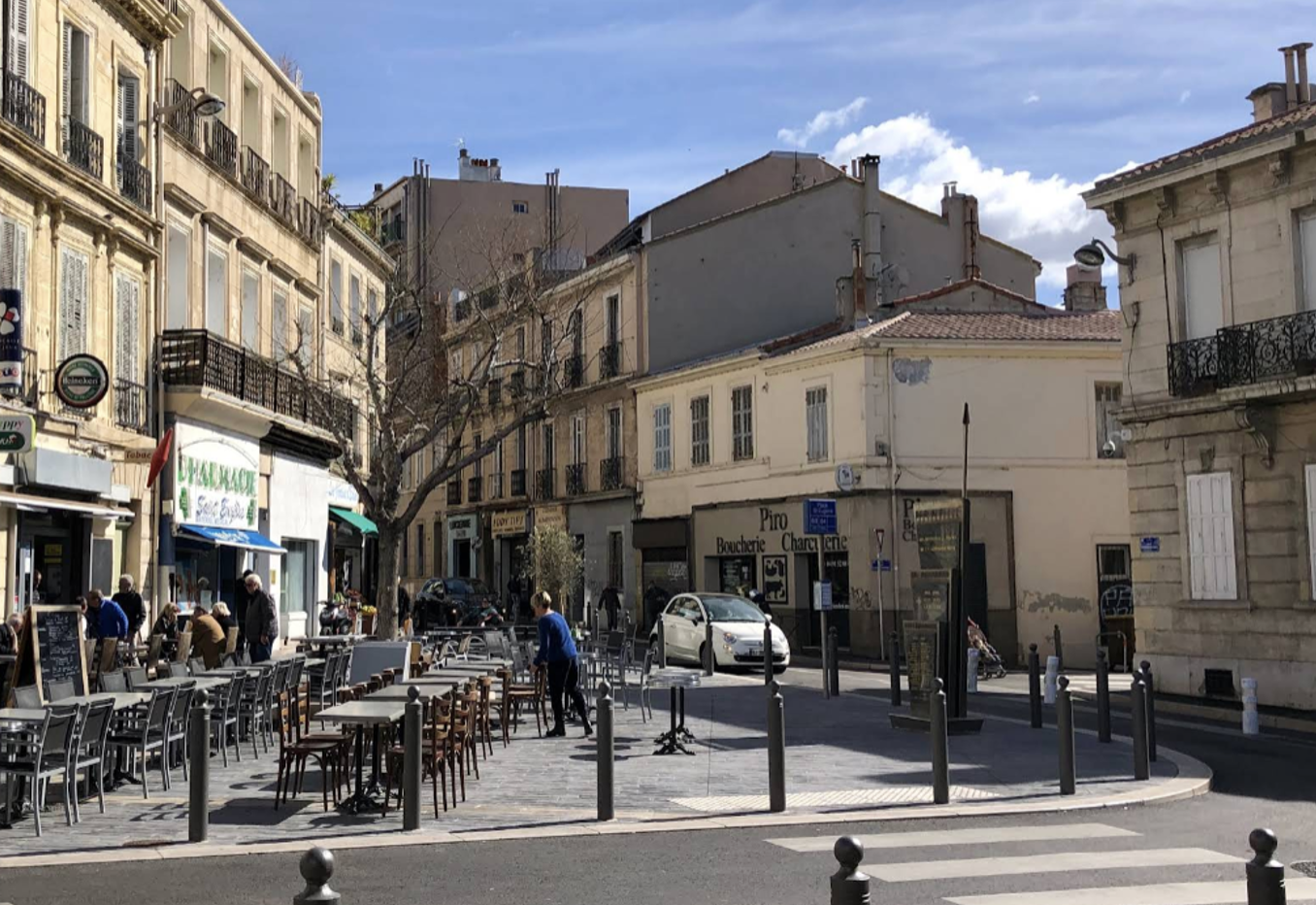
- From the rue du vallon des Auffes turn into the rue Robert et Fénelon Guidicelli. Robert was a young member of the Resistance who was murdered by the Gestapo on 9 August 1944 in Lyon. He was 33 years old.A plaque honours his memory. Next, we come to the house ‘A la bonne Fama’ of the headless woman.It was common practice in the past to represent ‘fame’ in this way. Fama’ means “good reputation” in Latin, as an explanatory sign indicates. Continue on your way around the Plateau de Samatan, a former fishermen’s quarter. From Rue Sollier, you can admire the Corniche and the seafront below.
- Rue du Four à Chaux and rue Paul Codaccioni take you off the plateau. At number 71 rue Charras, turn right down the stairs that provide a shortcut for pedestrians onto rue de Nice. This leads to the shaded Place du 4 septembre. As a reminder, 4 September 1870 was the date on which Emperor Napoleon III was deposed and the Third Republic proclaimed. The walk ends on the Avenue de la Corse, which takes you back to the starting point at the Plage des Catalans.
